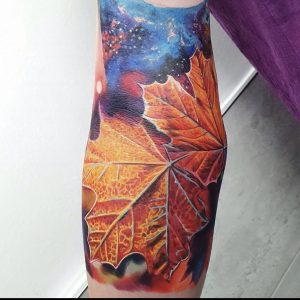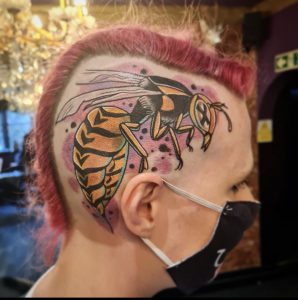How Does Tattoo Ink Work?
The global tattoo ink market is worth about $3.5 billion. And despite a hiccup in the trajectory (as for so many other plans and estimates) in 2020, it is expected to continue to grow in the years to come. It is the means for creating some truly spectacular and unique works of art, promoting self-esteem and body image. But how exactly does the stuff work? Let’s take a look at some of the characteristics and why it is so important to come to knowledgeable tattoo artists to look out for your long-term health.
Tattoo inks are made up of carriers and pigments. The carrier acts to keep the ink evenly mixed, free from pathogens, and to aid in its application. Carrier substances include ethyl alcohol, distilled water, methanol and glycerine. Homemade ink often uses vodka. There are also preservatives to make sure that no bacteria could potentially grow and cause infection.

What happens under the skin?
We have an in-depth exploration and explanation as to why exactly tattoos are permanent. However, let’s do a quick recap. When ink is injected into the skin with a needle, this creates tiny wounds. The body’s immune system reacts by sending cells known as macrophages to close the wound, swallow up the foreign troops and get rid of them. However, the ink particles are too large for the macrophages to gobble up, and so they instead become suspended in the dermis, causing the motive to become permanent.
The toxicity of old
So it is no wonder some (perhaps tattoo-less parents in particular) feel a little concerned that tattoo ink could contain elements that are toxic. If you are getting a tattoo from an unserious tattoo studio or artist, their worries could be justified. Historically, commercial tattoo pigments were made from mineral or geological sources, containing iron oxide and mercury sulfide – and even arsenic.

The importance of choosing the right studio
However, over the past 20 years, many manufacturers have transitioned from mineral-based to organic pigments and today produce non-toxic ink. This is why it really makes a huge difference in what tattoo studio you choose for your body art. With reputable and licensed tattoo studios and artists, you do not need to worry about the ink being toxic.
While there is little research into long-term effects on the heavy metals present in earlier ink, it can’t hurt to err on the side of caution. Besides, there are much more immediate health concerns, such as risk of infection, that come from going with less professional options. No matter how attractive the price may seem, it is never worth gambling your wellbeing on.
The rise of vegan ink

Some tattoo inks are made using animal by-products, like bone-char, shellac from beetles, gelatine, or animal fat as glycerine. Meanwhile, a growing market and demand for vegan ink have seen these replaced by plant-based sources. If animal origin products are a concern for you, talk to your artist.
As always, make sure that you visit a reputable and knowledgeable tattoo studio where they will always have your health and your safety as their utmost priority and only use top quality ink for their art. Commitment to cleanliness and health protocols will make sure your tattoo experience is a positive one, all the way from design and throughout the life expectancy of your tattoo. If you feel at all uncertain, raise any questions you may have with your artist so that they can put you at ease.
